Picture Gallery
View of the Y trench looking northeast
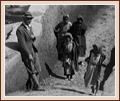 [/kish/fieldmus/images/EXP19-large.jpg]
[/kish/fieldmus/images/EXP19-large.jpg]
This photograph shows the massive depth and breadth of the excavations in the Y sounding on Ingharra. The field director, Charles Watlin, and workmen are visible in the foreground.
Kish East, Ingharra, Y Sounding. 1928-1929 Season. Negative 67093
View looking northeast from the ziggurat of Ingharra
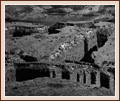 [/kish/fieldmus/images/EXP6-large.jpg]
[/kish/fieldmus/images/EXP6-large.jpg]
The niched and buttressed facade of the Neo-Babylonian temple is visible in the foreground, and the low mound C is in the middle ground with the horse-shoe-shaped Tell Bandar lying just beyond.
Kish East, Ingharra, Neo-Babylonian Temple. Negative 60216
Workmen standing in positions where graves were found in Y trench
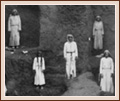 [/kish/fieldmus/images/EXP3-large.jpg]
[/kish/fieldmus/images/EXP3-large.jpg]
Twelve workmen standing in this photograph mark the positions of 9 of the many burials found during excavation of the Y Sounding.
Kish East, Ingharra, Y Sounding. Negative 59503
Y trench, looking southwest
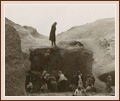 [/kish/fieldmus/images/EXP13-large.jpg]
[/kish/fieldmus/images/EXP13-large.jpg]
This photograph shows the Y Sounding filled with water after the excavations reached the depth of the water table. Work below that point proceeded for a further three meters by means of a hydraulic pump.
Kish East, Ingharra, Y Sounding. Oxford Negative 35A
Ali Adoud's tomb group found near two-wheeled chariot
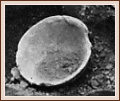 [/kish/fieldmus/images/EXP5-large.jpg]
[/kish/fieldmus/images/EXP5-large.jpg]
Chariot Burial No. I lay 4 m. below the plain level and was associated with several skeletons, each of which was surrounded by pottery. These skeletons appear to have been positioned next to a low mud brick wall that separated them for the burial of the cart itself.
Kish East, Ingharra, Y Sounding. Negative 60186
Haji Miniehl
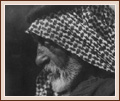 [/kish/fieldmus/images/EXP16-large.jpg]
[/kish/fieldmus/images/EXP16-large.jpg]
Haji Miniehl was the leading sheikh in the region. Men from his village, which lay about two miles west of the Kish camp, comprised most of the workforce of the Expedition.
Kish. Negative 60143
The quickest way to get a drink in a dry country
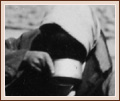 [/kish/fieldmus/images/EXP7-large.jpg]
[/kish/fieldmus/images/EXP7-large.jpg]
Water for the Kish workers to drink during the course of the work day was brought to the excavations on the backs of donkeys. Workers scooped water out of the large water jars with shallow metal pans, or, more expeditiously, with their hands.
Kish East, Ingharra. Negative 61637
Filling trucks at excavation
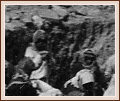 [/kish/fieldmus/images/EXP8-large.jpg]
[/kish/fieldmus/images/EXP8-large.jpg]
On the mound of Ingharra, the Kish Expedition used railway cars like those employed in mines in order to move vast quantities of earth. The cars were pushed along their tracks by men and boys and emptied on the dumps well away from the excavations themselves. Ernest Mackay noted that the cars could not be used when the weather was extremely warm, because they became too hot for the workers to touch.
Kish East, Ingharra, Z1, 2 m. trench. Negative 64039
Temple looking east southeast
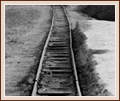 [/kish/fieldmus/images/EXP9-large.jpg]
[/kish/fieldmus/images/EXP9-large.jpg]
The niched and buttressed facade of the Neo-Babylonian temple on Ingharra was preserved to an incredible height. Here one sees the railway tracks and one of the mining cars being used to carry off debris from excavations inside the temple itself.
Kish East, Ingharra, Neo-Babylonian Temple. Negative 76639
Charles Watelin, René Watelin
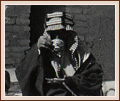 [/kish/fieldmus/images/EXP10-large.jpg]
[/kish/fieldmus/images/EXP10-large.jpg]
This photograph shows the field director, Louis Charles Watelin (far left) and his son René having tea with Haji Maniehl (far right) and two other Iraq men in the courtyard of the Kish Expedition dig house.
Kish, Mound K, Dig House. Ashmolean Museum Negative
Excavating trenches below water level at Kish
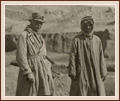 [/kish/fieldmus/images/EXP11-large.jpg]
[/kish/fieldmus/images/EXP11-large.jpg]
In the Y Sounding, the excavators reached what they took to be virgin soil at nine meters below the plain level. The Water Table was encountered at a depth of six meters, and work below that point proceeded downward by means of a hydraulic pump. This photograph shows a spurt of water shooting from the ground when the water table was first reached.
Kish East, Ingharra, Y Sounding. Oxford Negative M15A
Toy rattle in form of hedgehog from Babylonian layers
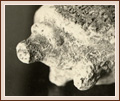 [/kish/fieldmus/images/EXP12-large.jpg]
[/kish/fieldmus/images/EXP12-large.jpg]
A member of the Kish Expedition photographed a terracotta rattle (now Field Museum 156931) next to an actual hedgehog, which is an animal commonly found in the area.
Kish. Negative 60191
The chariot wheels in Chariot Burial 1
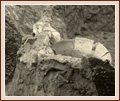 [/kish/fieldmus/images/EXP4-large.jpg]
[/kish/fieldmus/images/EXP4-large.jpg]
Only two wheels were found with Chariot Burial 1, in contrast to the four found with Chariot Burial 2. The terret (rein ring) of the chariot was surmounted by the figure of a small equid.
Kish East, Ingharra, Y Sounding, Chariot Burial I. Negative 60168
Looking northeast over the Y Trench
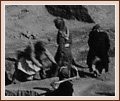 [/kish/fieldmus/images/EXP14-large.jpg]
[/kish/fieldmus/images/EXP14-large.jpg]
This photograph shows the depth to which the Y Sounding was dug. The facade of the Neo-Babylonian temple is visible in the distance, beyond the steps of the Y trenches above the level of current work. The "witness," a column of earth left unexcavated in order to demonstrate the depth of the work, is visible on the far right. The chronological span of the strata in the Y sounding ran from ca. 3400 B.C. at the base to the Neo-Babylonian Temple of the 7th century B.C.
Kish East, Ingharra, Y Sounding. Unknown 4a
"A" Cemetery from the ziggurat at Ingharra, the plano-convex area of excavations
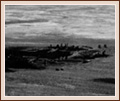 [/kish/fieldmus/images/EXP15-large.jpg]
[/kish/fieldmus/images/EXP15-large.jpg]
The site of Kish covers approximately 24 square kilometers and is composed of roughly forty mounds. This photograph, taken from the ziggurat at Ihgharra, shows Mound A during the excavation of the Early Dynastic palace there.
Kish East, Mound A, Cemetery. Negative 49184
Camp
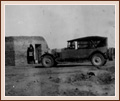 [/kish/fieldmus/images/EXP2-large.jpg]
[/kish/fieldmus/images/EXP2-large.jpg]
Two expedition vehicles are parked at the dig house, which was built of simple sun-dried mud bricks. The entrance to the dining room is visible on the left. This room was sunk below ground, which helped to insulate it--making it cooler in the warm weather and warmer in the cold weather.
Kish, Mound K, Dig House. Negative 58406
Grave, south end of Y trench
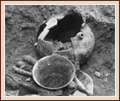 [/kish/fieldmus/images/EXP18-large.jpg]
[/kish/fieldmus/images/EXP18-large.jpg]
The skeleton in this burial was accompanied by numerous grave goods including stone and pottery vessels, cosmetic shells, long shell beads, shell vessels or lamps, and implements of copper.
Kish East, Ingharra, Y Sounding, Burial Y370. Negative 60239
Dudley Buxton (on left) on way to Jemdet Nasr
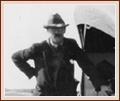 [/kish/fieldmus/images/EXP1-large.jpg]
[/kish/fieldmus/images/EXP1-large.jpg]
Each day of excavations at the site of Jamdat Nasr began with a 26 km drive from Kish to the site. The expedition vehicle carried food, dates, and unleavened cakes and gasoline cans of water to the site each morning . Temporary bridges had to be built across irrigation ditches in the cultivated areas around Kish, and the rough terrain beyond presented a myriad of further challenges. Here the expedition Ford appears to be stuck in a ditch or trench.
Kish, Between Kish and Jamdat Nasr. Negative 58576
M. Watelin
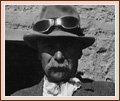 [/kish/fieldmus/images/EXP17-large.jpg]
[/kish/fieldmus/images/EXP17-large.jpg]
The field director Louis Charles Watelin cut a colorful figure with his aviator glasses, riding breeches and knee-high boots, and ever-present cane.
Kish West, Mound K, Dig House. Negative 65838
Workmen clearing the courtyard of Palace A
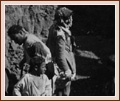 [/kish/fieldmus/images/EXP20-large.jpg]
[/kish/fieldmus/images/EXP20-large.jpg]
This photograph shows the large numbers of workmen who were employed by the expedition and the consequent intensity of the excavations and the quantities of earth moved.
Kish East, Mound A, Palace, Courtyard 6. 1923-25 Seasons. Negative 52793
Burial A5 in the A Cemetery
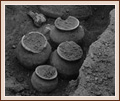 [/kish/fieldmus/images/EXP21-large.jpg]
[/kish/fieldmus/images/EXP21-large.jpg]
In addition to the pottery visible in the photograph, this burial contained a cosmetic shell, rubbing stone, knife, chisel, adze, straight pin, two earrings, and beads.
Kish East, Mound A, Cemetery, Burial A5. 1924 Season. Oxford Negative 166
Camp in Front of the Ziggurat at Uhaimir
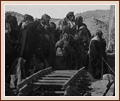 [/kish/fieldmus/images/EXP22-large.jpg]
[/kish/fieldmus/images/EXP22-large.jpg]
This photograph shows the Kish Expedition camp, with workmen lined up on the left to receive payment from someone (probably the field director, Ernest Mackay) seated at a table on the right. They are receiving either their wages or bakshish—extra payment for objects they unearthed during the course of the excavations.
Kish West, Mound K with Mound Z in the Background. 1924-25 Season. Oxford Negative 426
Dimna and Henry Field beside two wheels of a four-wheeled chariot/cart
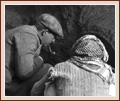 [/kish/fieldmus/images/EXP23-large.jpg]
[/kish/fieldmus/images/EXP23-large.jpg]
The wheels of the chariots buried at Kish had been compressed by the weight of the soil, which made them appear to be oval. The wood of the wheels had almost completely disintegrated, but their shape and appearance (and the copper nails that studded their rims) were recovered by encasing them in plaster to be shipped to Chicago for conservation and reconstruction. A photograph of the wheels as they appear today can be seen in the Object Gallery.
Kish East, Ingharra, Y Sounding, Chariot Burial. 1927-28 Season. Negative 5963
Expedition Staff
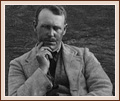 [/kish/fieldmus/images/EXP24-large.jpg]
[/kish/fieldmus/images/EXP24-large.jpg]
From Left to Right: Ernest Mackay, Field Director; Stephen Langdon, Director; and Col. W. H. Land, Topographist
1923-24 Season. Oxford Negative 213
Basket boys at Kish
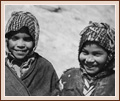 [/kish/fieldmus/images/EXP25-large.jpg]
[/kish/fieldmus/images/EXP25-large.jpg]
Young boys like these carried most of the earth cleared at Kish to the expedition dumps. Work crews, of which there were about a dozen each season, consisted of one man digging with a small pick, two other men or boys who scraped the dirt into baskets, and 6-8 young boys who carried away the baskets.
Kish. 1925-26 Season. Oxford Negative 502
Moving the railway
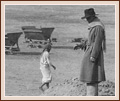 [/kish/fieldmus/images/EXP28-large.jpg]
[/kish/fieldmus/images/EXP28-large.jpg]
On the mound of Ingharra, the Kish Expedition used railway cars like those employed in mines in order to move vast quantities of earth. The cars were pushed along their tracks by men and boys and emptied on the dumps well away from the excavations themselves. Here the field director, Watelin, seen in the foreground with upraised hands, gives instructions to men and boys moving the tracks. Eric Schroeder, in fedora and trench coat, is watching in the middle ground on the right.
Kish East, Ingharra, Most likely Z. Negative 64022
Four baking-ovens, Jemdet Nasr
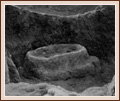 [/kish/fieldmus/images/EXP29-large.jpg]
[/kish/fieldmus/images/EXP29-large.jpg]
At Jamdat Nasr, excavations concentrated on the remains of a monumental building that was far too large to have served as a domestic dwelling. The contents of the building—proto-cuneiform tablets, quantities of painted pottery and cylinder seals—indicate that administrative functions took place within its walls. The presence of pottery kilns also suggests that many of the ceramic vessels, which were found sitting in situ on the floors, may have been produced within the building.
Jamdat Nasr. Negative 67752A
Work on "W" mound, library
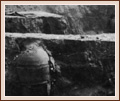 [/kish/fieldmus/images/EXP30-large.jpg]
[/kish/fieldmus/images/EXP30-large.jpg]
W is a mound of considerable size to the west of Ingharra. Excavations there revealed hundreds of tablets of the Neo-Assyrian and later period, which led to its being dubbed "the library."
Kish West, Mound W. Negative 49183
Palaces I and II looking to the south
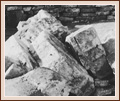 [/kish/fieldmus/images/EXP31-large.jpg]
[/kish/fieldmus/images/EXP31-large.jpg]
The Kish Expedition excavated seven buildings dating to the Sasanian Period on Mound H. Two, dubbed "Palaces I and II," were decorated with elaborate molded stucco decoration featuring geometric, floral, and figurative designs.
Kish East, Mound H. Negative 76633
Clearing the Neo-Babylonian temple
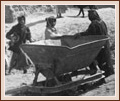 [/kish/fieldmus/images/EXP32-large.jpg]
[/kish/fieldmus/images/EXP32-large.jpg]
Henry Field described the clearing of this temple in his book, The Track of Man (1953, p. 78):
"Slowly the outer walls of the base of a great temple were being uncovered. This was tedious work and resulted in nothing but a ground plan and photographs. Of all the treasures we had dreamed of finding in the temple, there came to light but five golden beads, which some hand had hidden in ancient times behind a brick in a high wall. What story lay behind them, of guilt or romance, we shall never know."
Kish, Ingharra, Neo-Babylonian Temple. 1925-26 Season. Oxford Negative 508
The Field Museum
The Field Museum, 'Picture Gallery', The Field Museum's Kish Database Project, 2004-09, The Field Museum, 2025 [http://oracc.org/kish/fieldmus/PictureGallery/]